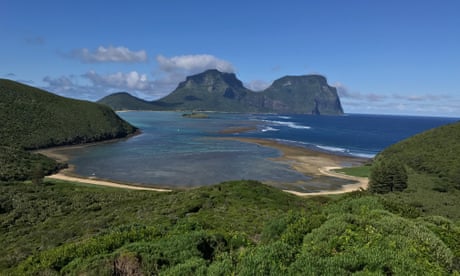Extract from The Guardian
What will it take for us to collectively pay attention? Not a new question, but a reasonable one after the official declaration that the Great Barrier Reef is suffering through another mass bleaching event driven by global heating – the fifth since 2016.
There is no clearer visual demonstration of the climate crisis than what is happening to the reef. It’s a globally unique landmark, made up of thousands of individual reefs and islands and an extraordinary and eccentric array of species. It has been growing into its modern form, spread across an area the size of Italy, for about 8,000 years. People travel from across the planet to witness it. And we can literally see the impact of climate change on it as it changes colour and loses life in real time.
Widespread mass bleaching was not recorded on the reef before 1998, but has now happened seven times. The last five were in 2016, 2017, 2020, 2022 and 2024.
Coral bleaching is a brutal process caused by inflated ocean temperatures. The coral becomes stressed and ejects the tiny marine algae, known as zooxanthellae, that live in its tissue and give most of its colour and energy. With the zooxanthellae gone, the coral starves and its bone-white calcium skeleton becomes visible.
If the elevated temperature doesn’t last long, the coral can recover. Otherwise, it starts to die. In the most severe cases, the bleaching is basically just skipped and the coral dies almost immediately. When it does, the white, bleached appearance fades to dirty, scuzzy brown as it is swamped by algae.
That’s what can happen in a one-off event. But we’re not in one-off event territory any more and the impact of bleaching is also cumulative. The entire length of the reef has been severely affected at some point since 2016. Bleached coral that survives becomes more susceptible to disease and less resilient the next time bleaching hits.
Increasingly, that’s looking like it could be every year. The most recent bleaching event before the current one occurred during a La Niña, when ocean temperatures are suppressed. It suggested bleaching is about to become the status quo – if it isn’t already.
None of this is a surprise. A summary of the peer-reviewed science by the Intergovernmental Panel on Climate Change in 2018 reporting that a majority of tropical coral reefs would disappear even if global heating was limited to 1.5C above pre-industrial levels. They found they would be “at very high risk” at a rise of just 1.2C.
Average global temperatures are already nearly at this level. And ocean temperatures, in particular, are soaring. They have been at the highest level on record for about a year.
What’s being recorded on the reef now is part of a global event. The US Coral Reef Watch program has warned the planet is on the cusp of a fourth global mass coral bleaching event, affecting reefs in the Pacific, Atlantic and potentially the Indian Ocean.
Despite this, misinformation persists. There are still voices in Australia, some of them backed by deep-pocketed climate sceptics in the mining industry, that claim the Great Barrier Reef is fine. They inflate isolated voices above a massive weight of national and global evidence. It’s likely we will see more of this in the coming days.
The reality is the reef is not dead – there is still colourful coral and vibrant ecosystems to be seen by those who visit – but a change is under way, and the prognosis is bad.
The aerial surveys conducted over the past couple of weeks by the Great Barrier Reef Marine Park Authority have so far covered about two-thirds of the length of the reef. There are more aerial and in-water surveys to come.
We already know that heat stress is the highest on record in the reef’s southern and central regions and the second highest in the northern areas. Shallow water corals, some of which have taken hundreds of years to grow, are getting hammered.
What do you do with this information? Obviously not everyone can get there, but the reef is absolutely worth visiting if you can. It remains a wonder. But we can’t pretend that what we are doing as a country is enough if we want to give it a chance of staying that way in the years and decades ahead.
Australia clearly cannot save the reef on its own. But it’s hard to make the case that others should do more when the country still has an emissions reduction target consistent with global heating of about 2C, a level at which scientists have forecast 99% of tropical reefs would be lost.
It’s harder still when it has no clear plan to phase out new coal and gas developments, and much of the public discussion suggests they are a neutral action that has no impact on the world. Tell that to the reef.


No comments:
Post a Comment